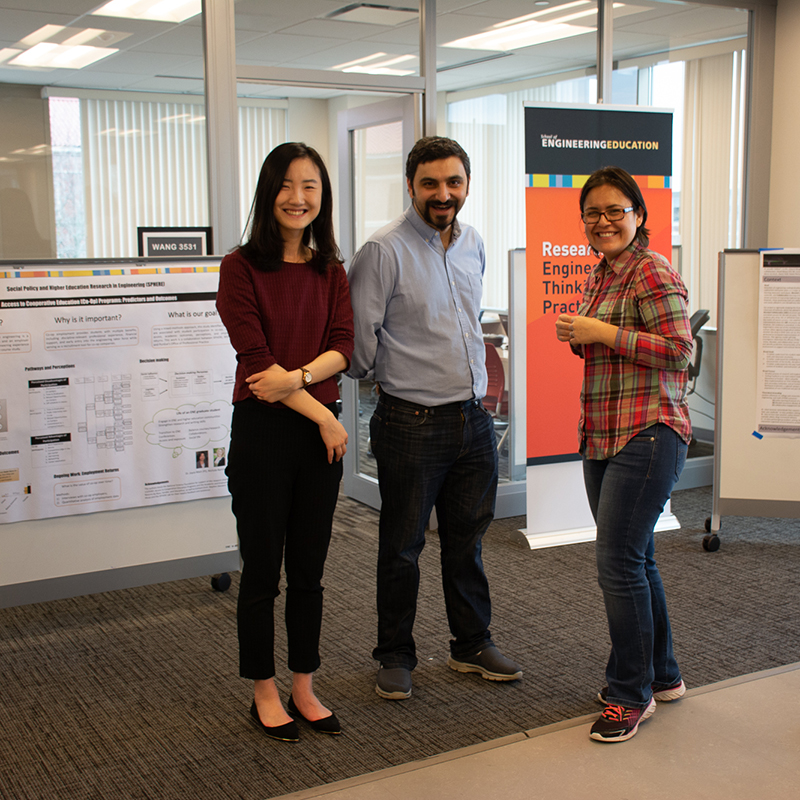Dr. Rose Xu
 Rose Xu
Rose Xu
Dissertation Defense: July 1, 2019
Committee: Dr. Joyce Main, Dr. Beth Elmore, Dr. Allison Godwin, and Dr. Michael Loui
Developing a Self-Assessment Tool for Engineering Students: The Self-Efficacy Inventory for Professional Engineering Competency (SEIPEC)
Although ABET has outlined educational outcomes to help prepare students with the necessary competencies to succeed in professional engineering practice, it is unclear how confident students are in their professional engineering skills. Competency refers to the“generic, integrated and internalized capability to deliver sustainable effective performance in a certain professional domain, job, role, organizational context, and task situation.” Understanding their competency provides students with a bridge to connect their academic experiences with their ability to perform their workplace duties. To help students assess their competency, I developed the Self-efficacy Inventory for Professional Engineering Competency (SEIPEC), an inventory that aims to measure engineering students’ self-efficacy for professional engineering competencies. Unlike other inventories in engineering that measures the academic experience, or other self-efficacy inventories that do not have a focus on the engineering population, this career assessment is designed for college-level engineering students to evaluate their subjective readiness for successful performance in the workplace.
SEIPEC is a tool for students to self-assess their professional competencies, aiming to empower students to become reflective on their learning and increase awareness of workplace competencies. SEIPEC was developed based on the American Associations of Engineering Societies’ Engineering Competency Model (ECM). The ECM identifies factors that contribute to self-efficacy for professional engineering competency. ECM was developed using Delphi method and encompasses a comprehensive list of competency statements that were suggested and approved by industry leaders and engineering educators to summarize the potential competencies needed for a professional engineer.
The data include 434 complete responses from bachelor’s and master’s students at a Mid-western research-intensive university. The sample represents 13 engineering disciplines, including 282 male and 146 female students, 48 first-generation students, and 63 international students. After the exploratory factor analysis and the confirmatory factor analysis, a four-factor model with 20 competency statements was validated as the measurement for self-efficacy for professional engineering competency. The four factors that contribute to the self-efficacy of professional engineering competency include (1) sustainability and societal impact, (2) health and safety, (3) application of tools and technologies, and (4) engineering economics.
The SEIPEC tool could empower engineering students to reflect and connect their academic experience with professional competencies. SEIPEC would provide students with an additional method to self-evaluate their skills, in addition to other assessment methods, such as course grades and traditional engineering exams. Incorporating self-assessment of professional engineering competencies into engineering assessments could increase students’ awareness of their competencies, and intentionality of connecting learning with their professional preparation. Career advisors and counselors can also use this tool to guide career advising conversations revolving around students’ choice to pursue and prepare for engineering as a future career path.
Memories with Rose

March 2017: Located in our research suite of Wang Hall, Rose with fellow PhD students Hossein and Matilde during a graduate program poster session with our Industrial Advisory Council.

June 2017: Rose with now current PhD student Tikyna in our exhibit booth at the ASEE Annual Conference.
